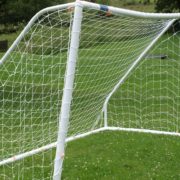Youth Soccer Parents: A Guide to the Game of Soccer
As a youth soccer parent, having a grasp of the fundamentals of the game can enhance your enjoyment of the sport. Soccer as a support has gained massive popularity worldwide. The fact is even truer for young athletes. The match is played between two teams, with each containing eleven players on a rectangular field. The primary objective of the game is to score goals by kicking or heading the soccer ball into the opposing team’s goal. The team with the most goals at the end of regulation play or overtime is declared the winner.
However, as a youth soccer parent, you must learn the basics of this game and help your child to thrive.
So, here we go:
Learn the basics of Youth Soccer
Let’s have a look at the basics of youth soccer:
Rules of game
Soccer has its own set of rules. Understanding these rules is essential not only for the players but also for parents. You must understand that the foundation of soccer lies in fundamental rules. Learning about the rules concerning fouls, scoring, and more is the first step in understanding the game. Free kicks, corners, and throw-ins are essential aspects of the game.
Players’ action
Soccer players predominantly use their feet to pass the ball to teammates and take shots on goal. They may also employ their head and torso to control or pass the ball or direct it into the goal. When the ball goes out of bounds along the sidelines, the team that did not last touch the ball throws it into play using an overhead motion. If the ball goes out of bounds along the end lines, either a corner kick or a goal kick is awarded. The decision will depend on which team last touched the ball.
Fouls
Fouls occur frequently in soccer and can include actions like touching the ball with one’s hands or tripping/pushing another player. Fouls can result in direct, indirect, or penalty kicks and are sometimes accompanied by a yellow or red card being shown to the offending player.
Positions
In soccer, there are eleven players per side, with a goalkeeper and ten outfield players occupying various basic positions. These include forward, midfield, and defense. Let’s learn more about the players’ positions here to understand things better.
Forward or Striker
Forwards are often referred to as strikers or attackers. They are stationed closest to the goal of the opposing team and are primarily responsible for scoring goals. In Youth Soccer, there exist different types of forward or strikers. These types usually include:
- Center Forward
The center forward typically scores the most goals on a team and receives the majority of assists.
- Second Forward
Second forwards, also known as supporting or second strikers, play a versatile role. It usually combines aspects of midfield and forward play.
- Wingers
Wingers are quick players who position themselves closer to the sidelines. They either attack the goal from the outside or provide crosses for the center forward to finish.
Midfield
Midfielders operate in the middle third of the field, bridging the gap between forwards and defenders. Just like attackers, there are different types of midfielders in Youth Soccer. These typically include:
- Holding or defensive midfielder
A defensive midfielder is stationed in front of the defenders of the team to prevent the attacks of the opposing team. The holding midfielder also facilitates the transition from defense to offense.
- Center Midfielder
Center midfielders are versatile and creative players. They can both score and defend. They are often considered the cornerstone of the team.
- Attacking Midfielder
This player is positioned closer to the opponent’s goal; attacking midfielders support the forwards in the offensive phase of play. They are here to aid in creating goal-scoring opportunities.
Required youth soccer equipment
You must understand that soccer demands specific equipment to ensure the safety and performance of youth players. Whether your child is just starting or has been playing for a while, having the right gear is essential. Here is the list of key soccer equipment your child needs:
- A soccer jersey
- Soccer shorts designed for ease of movement
- Knee-length soccer socks
- Shin guards are a vital accessory for safety
- If your child is a goalkeeper, goalkeeper gloves are essential.
- A water bottle to keep them refreshed during practices and games.
- A soccer bag to carry and store all the equipment.
Youth Soccer Coaching and Development
Coaches play a pivotal role in your child’s soccer journey. Understanding their role and how to choose the right coach is crucial. They serve as mentors, motivators, and instructors in various ways, helping young players not only improve their soccer skills but also grow as individuals.
- Coaches teach fundamental soccer skills such as dribbling, passing, shooting, and defending. They create practice sessions that focus on individual and team skill development.
- Coaches help players understand the tactical aspects of the game, including formations, strategies, and positioning. They guide players on how to work together as a team.
- Coaches design fitness programs to improve players’ endurance, strength, and agility, which are crucial for performing well on the field.
Above all, coaches serve as role models and mentors, teaching young players about discipline, sportsmanship, teamwork, and the importance of hard work. They instill values that go beyond soccer. They inspire and motivate their players to give their best effort, set and achieve goals, and stay committed to the sport.
Dos and don’ts as a Youth Soccer Parent
Here are some dos and don’ts of youth soccer parents:
- Encourage your child to enjoy and develop their skills, and offer emotional support regardless of the outcome of a game or practice.
- Maintain a positive attitude. Focus on their effort, improvement, and teamwork rather than just the score or individual achievements.
- Trust the coach’s decisions and expertise. If you have concerns, address them privately and respectfully.
- Don’t put excessive pressure on your child to win or perform exceptionally. Let them enjoy the game.
- Refrain from yelling at your child or criticizing their performance during the game. It can create undue stress and harm their self-esteem.
- Don’t compare your child’s performance with that of other players. Each child develops at their own pace.
Final Thoughts
Being a youth soccer parent can be a rewarding experience, but it also comes with responsibilities and expectations. However, learning the basics of the game, managing your expectations and building a positive relationship with Youth soccer coaches can help you become the best youth soccer parent.










